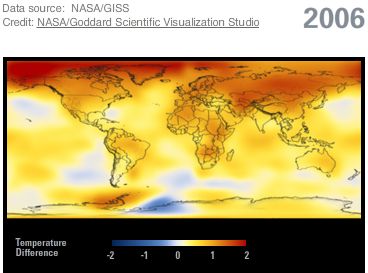 Arguments
Arguments
 Software
Software
 Resources
Comments
Resources
Comments
 The Consensus Project
The Consensus Project
 Translations
Translations
 About
Support
About
Support


Latest Posts
- Skeptical Science New Research for Week #49 2025
- Climate Adam & Dr Gilbz - Paris Climate Agreement At 10: Did It Do Anything?
- Fact brief - Does the recent slowdown in Arctic sea-ice extent loss disprove human-caused warming?
- Why the chemtrail conspiracy theory lingers and grows – and why Tucker Carlson is talking about it
- 2025 SkS Weekly Climate Change & Global Warming News Roundup #48
- Skeptical Science New Research for Week #48 2025
- Consensus machines
- Just have a Think - How an African energy revolution could save ALL of us.
- A girl’s grades drop every summer. There’s an alarming explanation.
- 2025 SkS Weekly Climate Change & Global Warming News Roundup #47
- Fact brief - Are changes in solar activity causing climate change?
- Skeptical Science New Research for Week #47 2025
- Exploring newly released estimates of current policy warming
- Climate Adam - Why the Climate Crisis is a Health Crisis
- Super pollutants are trendy, but we should be careful how we use them
- 2025 SkS Weekly Climate Change & Global Warming News Roundup #46
- Skeptical Science New Research for Week #46 2025
- On the Gates climate memo
- Climate Adam - Climate Scientist responds to Bill Gates
- Five ways Joe Rogan misleads listeners about climate change
- 2025 SkS Weekly Climate Change & Global Warming News Roundup #45
- Skeptical Science New Research for Week #45 2025
- Debunking Joe Rogan, Dick Lindzen, and Will Happer
- Fact brief - Does cold weather disprove human-caused climate change
- Climate change strengthened Hurricane Melissa, making the storm’s winds stronger and the damage worse.
- 2025 SkS Weekly Climate Change & Global Warming News Roundup #44
- Skeptical Science New Research for Week #43 2025
- Climate Adam - Can Solar Halt the Desert?
- Fact brief - Is there empirical evidence for human-caused global warming?
- A “controversial” methane metric?
Archived Rebuttal
This is the archived Basic rebuttal to the climate myth "It's Urban Heat Island effect". Click here to view the latest rebuttal.
What the science says...
|
Urban and rural regions show the same warming trend. |
The Urban Heat Island Effect (UHI) is a phenomenon whereby the concentration of structures and waste heat from human activity (most notably air conditioners and internal combustion engines) results in a slightly warmer envelope of air over urbanised areas when compared to surrounding rural areas. It has been suggested that UHI has significantly influenced temperature records over the 20th century with rapid growth of urban environments.
Scientists have been very careful to ensure that UHI is not influencing the temperature trends. To address this concern, they have compared the data from remote stations (sites that are nowhere near human activity) to more urban sites. Likewise, investigators have also looked at sites across rural and urban China, which has experienced rapid growth in urbanisation over the past 30 years and is therefore very likely to show UHI. The difference between ideal rural sites compared to urban sites in temperature trends has been very small:

Figure 1. Annual average temperature anomalies. Jones et al (dotted green and brown) is a dataset of 42 rural and 42 urban sites. Li et al (solid green and brown) is an adjusted dataset of 42 rural and 40 urban sites. Li (blue) is a non-adjusted set of 728 stations, urban and rural. CRUTEM3v (red) is a land-only data set (Brohan et al., 2006). This plot uses the 1954–83 base period.
Another way to explore the UHI would be to look at where the majority of warming has occurred across the globe. The UHI should match where most people live. However, if you look at the 2006 global temperature anomaly (figure 2.), you find that the greatest difference in temperatures for the long term averages where across Russia, Alaska, far north Canada and Greenland and not where major urbanisation has occurred.

Figure 2. Using source data from NASA/GISS, this illustration shows the amount of change in global surface temperatures in 2006 from 1885.
The Urban Heat Effect has no significant influence on the record of global temperature trends.
Updated on 2011-09-05 by mothincarnate.
THE ESCALATOR

(free to republish)
























































